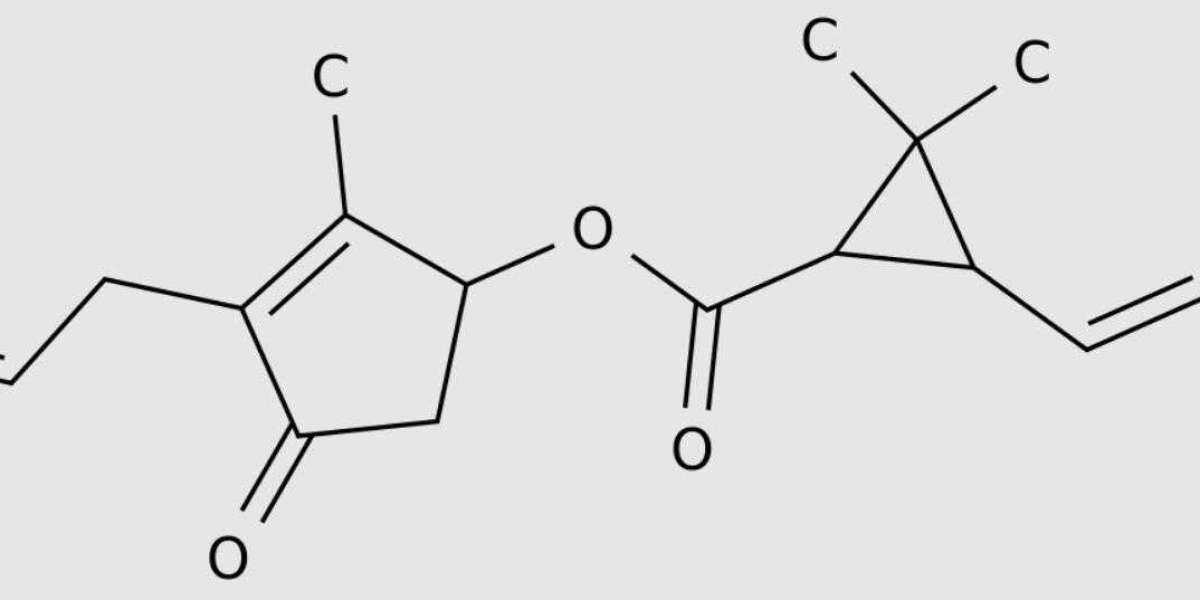Trade name and other names: The trade names of allethrin include ease, Pynamin, d-allethrin, d-cis allethrin, bioallthrin, Esbiothrin, Pyresin, Pyrexcel, Pyrocide, and trans allethrin.
Regulatory status: Pesticides containing allethrin are classified as toxicity level III - slightly toxic, and are labeled with the words "warning" on the product label. The containers of technical grade d-trans allethrin are labeled with warning words.
Chemical category: pyrethroid
Allethrin is a non systemic insecticide used almost exclusively in households and gardens to control flies and mosquitoes, and is used in combination with other insecticides to control flying or crawling insects. Another structural form, the d-trans isomer of allethrin, is more toxic to insects and is used to control parasites in animals. It can be made into mosquito repellent incense, mosquito repellent incense pad, mosquito repellent incense oil and spray. Propethrin is a type of pyrethroid, an artificially synthesized compound that can replicate the activity of pyrethroid plants. It has stomach and respiratory functions, paralyzing insects before killing them. Unless otherwise specified, the information in this configuration file refers to unpurified allethrin.
Dosage form: It can be made into mosquito repellent incense, mosquito repellent incense pad, mosquito repellent incense oil and spray. Toxicological effects:
Acute toxicity: allethrin has mild toxicity when absorbed through the skin and ingested. Short term exposure to allethrin on the skin may cause itching, burning, tingling, numbness, or fever, but it will not cause dermatitis. High dose exposure through any route can lead to nausea, vomiting, diarrhea, overexcitement, physical disharmony, tremors, convulsions, convulsions, blood and tears, urinary and bowel incontinence, muscle paralysis, weakness, and coma. Propethrin is a central nervous system stimulant. Severe respiratory exposure can lead to coordination disorders and loss of bladder control in mice and rats. The toxicity of allethrin varies with the content of its isomers. The LD50 for oral administration of allethrin is 1100 mg/kg in male rats, 685 mg/kg in female rats, 480 mg/kg in mice, and 4290 mg/kg in rabbits. The oral LD50 of d-allethrin in rats is 1320mg/kg. The LD50 of rat dermis is is greater than 2500mg/kg.
Chronic toxicity: not available
Reproductive impact: There is currently no data available.
Teratogenic effect: The offspring of rats treated with 195 mg/kg/day showed no developmental defects.
Mutagenic effect: It has been found that allethrin has a mutagenic effect on Salmonella typhimurium strains under specific conditions. However, d-allethrin (biological allethrin) tested negative for DNA damage and mutation. Therefore, allethrin appears to have little or no mutagenic activity.
Carcinogenic effect: Rats fed high doses of d-propethrin for 2 consecutive years did not develop cancer.
Organ toxicity: Rats fed 75 mg/kg/day of d-propathrin showed a decrease in weight gain, an increase in liver weight, and an increase in serum liver enzyme levels only in females. A 6-month study showed that feeding dogs 5 mg/kg of d-allethrin (biological allethrin) daily has an impact on the liver. Taking a dose of 50 mg/kg/day for two years has no significant effect on dogs.
Fate of humans and animals: After oral administration, allethrin is easily absorbed and metabolized into less toxic compounds in the mammalian system, which are more easily excreted by the body.
Ecological effects:
Impact on birds: Propethrin is almost non-toxic to birds. The oral LD50 of allethrin is 2030 mg/kg in quails and greater than 2000 mg/kg in mallards. The LD50 of d-allethrin diet for wild ducks and quails is 5620 ppm.
Impact on aquatic organisms: Pyrethroid insecticides, including allethrin, are toxic to fish. The sensitivity of fish to pyrethroid insecticides may be due to their relatively slow metabolism and clearance of these compounds. The half-life of several pyrethroids removed by trout is greater than 48 hours. Generally speaking, the lethality of pyrethroids to fish increases with their ability to dissolve in fat. The LC50 (96 hours) of slot catfish is 30mg/L. The toxicity range of allethrin compounds ranges from an LC50 of 0.0026 mg/L for silver salmon d-allethrin to 0.08 mg/L for blackhead minnow s-allethrin.
Impact on other organisms: Propethrin has mild toxicity to bees. Its LD50 is 0.003 to 0.009 mg per bee.
The fate of the environment:
Decomposition of soil and groundwater: Currently, there is no data available.
Decomposition in water: In pond water and laboratory degradation studies, the concentration of pyrethroids rapidly decreases due to absorption by sediment, suspended particles, and plants. Microorganism and photodegradation also occur.
Vegetation segmentation: Currently, there is no data available.


